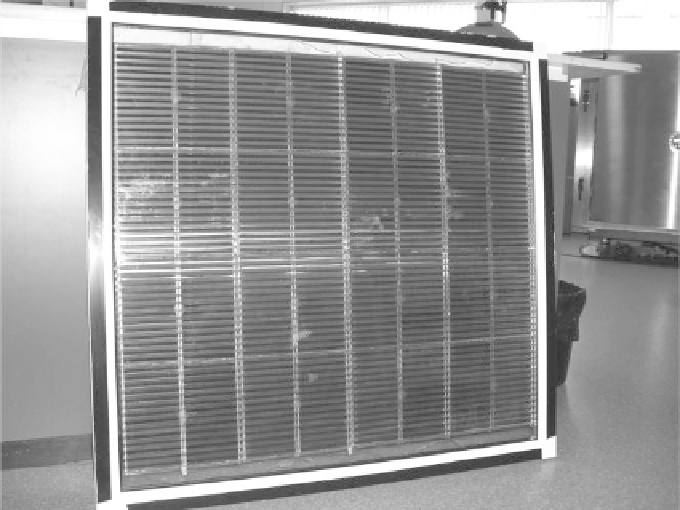Environmental Engineering Reference
In-Depth Information
Figure 17.2.13
Second Generation dielectric PRIDE Photovoltaic Concentrator Module (Mallick and
Eames, 2007).
factor, the reflecting surface area used by these systems is elevated compared to the sur-
face area of PV cells. Given the detrimental effect this has on illumination of interior
spaces, low-concentration static concentrators are preferable for architectural inte-
gration. These form the vast majority of CPC systems. They may be designed to
be installed at any inclination or position which receives solar radiation (flat roofs,
inclined roofs, façades, etc.). What's more, although the reflector area is high with
respect to the PV cell area, the volume of the entire system is relatively reduced, the
geometry approximately tending to a parallelepiped.
The aforementioned linear Fresnel systems with one-axis tracking (Kaminar et al.,
1991; Bottenberg et al., 2000) can also be included within the low-concentration
group. Leutz et al. (1999a) designed a convex-shaped non-imaging stationary Fresnel
lens (1.5-2X) intended for warming up evacuated tubes, but able to be used with PV
including secondary optics.
Other low-concentration systems which are currently less used but are the subject
of some study are: fluorescent/luminescent concentrators, quantum dot concentrators
and holographic concentrators.
The idea of using fluorescent concentrators (Figure 17.2.14) to concentrate both
direct and diffuse radiation without tracking systems first appeared in the late 1970s
(Weber and Lambe, 1976; Goetzberger and Greubel, 1977). In a fluorescent concen-
trator, a matrix of dye molecules absorbs radiation and emits light with a longer
wavelength. Most of the emitted light is internally totally reflected and therefore

Search WWH ::

Custom Search